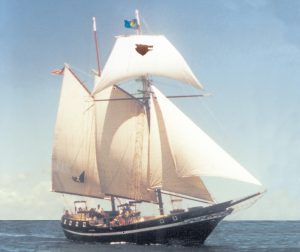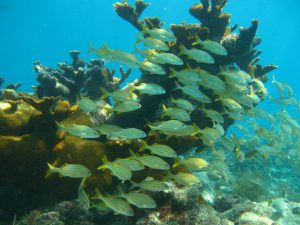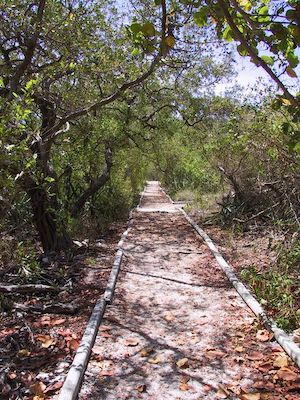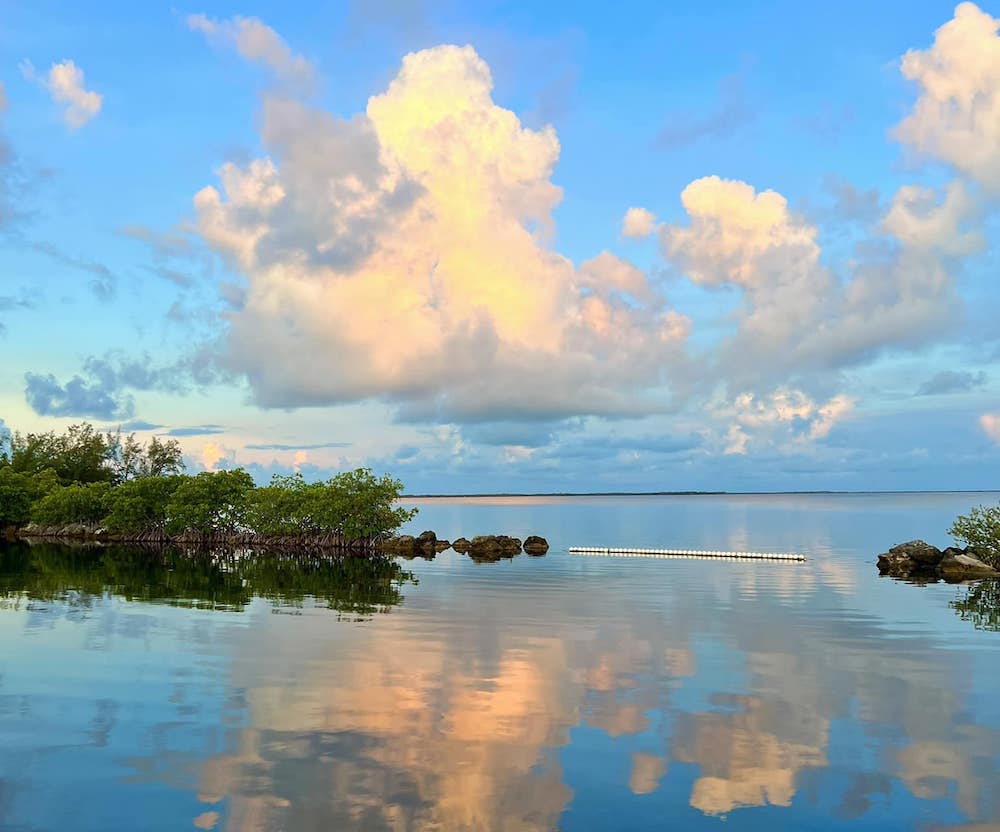In the unforgettable “Pirates of the Caribbean” films, the buccaneers were guided by a code of conduct that was originally created by the Brethren Court of pirate lords. Theoretically, its rules were strict and unbending — but before the end of the first film, heroine Elizabeth Swann convinced the crew of the pirate vessel Black Pearl that “they’re more like guidelines, anyway.”

Modern-day buccaneers are scarce in the Keys, but their seafaring spirit is alive in vessels like the Schooner Wolf.
Though buccaneers are few and far between in the Florida Keys (sometimes called America’s Caribbean), Keys residents and others who love the island chain are definitely guided by a code of conduct.
This code was designed to protect a treasure richer than any pirate gold — the region’s amazing natural environment. The Florida Keys are paralleled by the continental United States’ only living coral barrier reef, which is often called the third largest in the world. Much like a tropical rainforest, the reef ecosystem supports an incredibly diverse population of plants and animals.
The entire land mass of the Keys is surrounded by the Florida Keys National Marine Sanctuary, which was established in 1990 by the U.S. government. Visitors to the island chain will also find land-based refuges where birds, wildlife and their habitats are protected — including the Lower Keys’ National Key Deer Refuge that’s home to shy, soft-eyed miniature deer the size of large dogs.
So what exactly IS the code of the Keys?
Its core is the 10 Keymandments. Unlike the Bible’s 10 Commandments, which advise people what NOT to do, the Keymandments advise travelers what they CAN do to have a meaningful, memorable vacation while respecting and helping preserve the Keys environment.

The Florida Keys National Marine Sanctuary is an environmental treasure that protects the waters surrounding the entire Florida Keys.
Lighthearted yet educational, they’re guidelines for enjoying a sustainable travel experience in the laid-back subtropical spot.
ONE: Plant a coral (or adopt one of the cute little things, but don’t touch them on the reef).
TWO: Support the wildlife (volunteer food, funds or time to a local wild bird center).
THREE: Take out the trash (especially if it’s floating in the water).
FOUR: Capture a lionfish (any time and any size — we can show you how).
FIVE: Leave a digital footprint (share pictures with fans, friends and followers).
SIX: Hike it, bike it or hoof it (it’s low on eco-impact and high on fresh tropical air).
SEVEN: Catch dinner (and release all the fish you know you can’t eat).

Secluded nature trails provide a great recreational opportunity for hiking enthusiasts in Upper Keys state parks.
EIGHT: Use a mooring buoy at dive sites (save your back and leave the anchor alone).
NINE: Conserve vs. consume (reduce, reuse and recycle even on vacation).
TEN: Get off the beaten path (you can hike, bike, walk, kayak or paddleboard along Keys trails).
While the code of conduct in the “Pirates” films proved to be somewhat elastic, the Keys code should be followed at all times by everyone who cares about the area’s environment. In fact, the Keymandments are a modern-day addition to more than a century of efforts to preserve it.
Discovering the island chain’s natural world is easy with a knowledgeable local eco-tour guide or watersports operator — whether on a kayaking paddle through tranquil waters and surreal mangrove tangles, an excursion to view dolphins in the wild, or a dive or snorkeling trip in America’s first underwater park.
To explore eco-adventures in the Florida Keys, just click here. And don’t forget … to protect and preserve the Keys’ environmental treasures, always follow the code.

